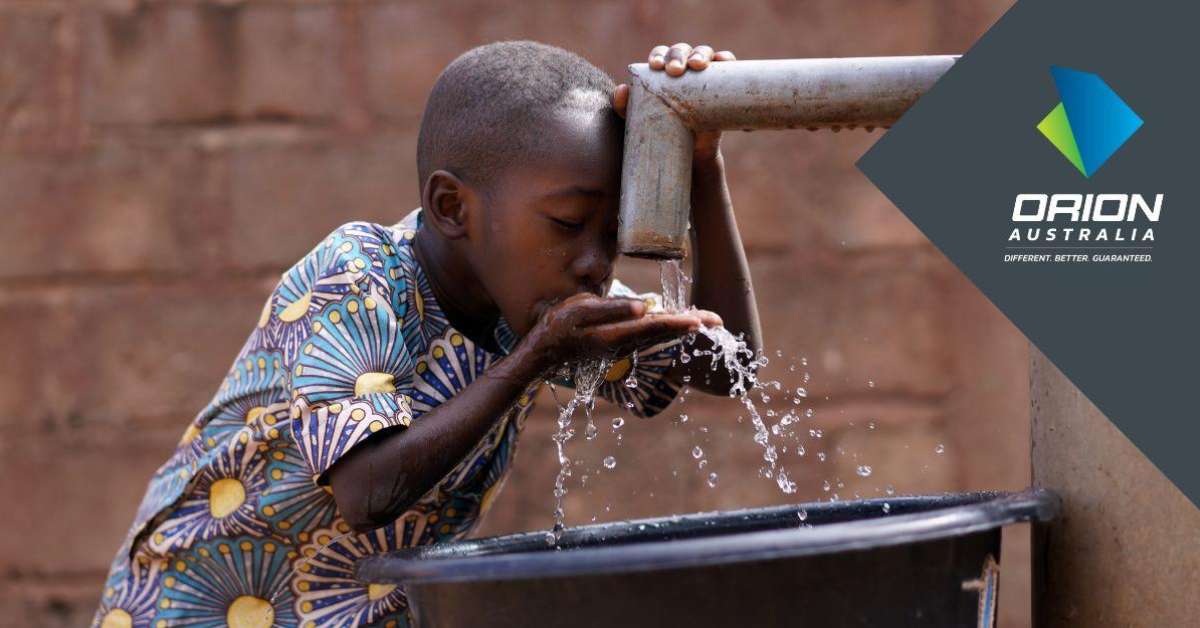24 January 2024
World Water Series – Rainwater Conservation in Senegal
Senegal, located in the western part of Africa, shares borders with Mauritania, Mali, Guinea, and Guinea-Bissau. It has a dry, tropical climate. As the Senegalese population grows and urban areas expand, innovative water conservation methods have become vital. In this article, we will have a look at some of the daily water obstacles and key actions already helping this ever-growing country to address its water crisis.

Infrastructure and Water Sources
Ensuring a consistent fresh water supply to the Senegalese poses significant challenges. What we take for granted - turning on a water tap can be a source of immense stress. Imagine facing days without access to water after turning a tap! Many travel long distances in search of water leaving family behind so they can meet the needs of their households and animals.
In some cases, water can be so polluted, yet people still consume it despite the health risks. The overexploitation of aquifers and an aging pipeline contribute to these water stresses. Pipeline leakage results in more than a two-million-ton loss annually! Addressing these issues is vital for ensuring a sustainable and reliable water supply for the Senegalese population.
Support from Organisations Improving Community Welfare
The community in Senegal have received vital financial support from various organisations, foundations, and businesses helping to implement better water storage and treatment facilities. In 2021 there was a commitment to renewing the infrastructure which will help with water distribution and reduce leakage.
- School Initiatives
A notable step has been the installation of water reservoirs in the schools. This initiative holds significance in ensuring constant and reliable water access. This is particularly important for maintaining hygiene practices and guaranteeing an adequate supply for bathing, even during the dry season.
- Rainwater Harvesting Systems (Raincap)
Another way of addressing the water shortage, innovative rainwater harvesting systems called Raincap have been introduced. These systems collect water from rooftops, store it underground, and undergo filtration before being available for use.
- “One Million Water Tanks for Sahel” Program
This program called “One Million Water Tanks for Sahel” has built more than one million tanks and benefited many millions in the arid zones. This initiative plays a crucial role in the increasing of water accessibility and resilience in regions facing water shortages. The joint efforts of these organisations are essential in addressing the water crisis and improving the overall well-being of the Senegalese community.
Sustainable Agriculture Practices
In Senegal, the agricultural industry faces challenges such as compacted soil, resembling a bitumen road and when it rains the water just runs away. Communities have come together, motivated to cultivate the land, and have discovered effective techniques.
- “Half-Moons”
A traditional technique that reduces water run-off, soil erosion and improves production. It is a technique where semi-circular basins are dug on gentle slopes to retain water. Elevated soil is deposited on each downhill side forming terraces that keep the immediate area well supplied with water to support surrounding vegetation. This technique has allowed the growers to save money to buy tools, extra resources and now able to build wells to access their own water supply.
- SRI (System of Rice Intensification)
This new method was introduced for rice cultivation, it allows for year-round rice production without relying on imports and now the surplus is sold. This method involves preparing the rice seedlings before planting out with unflooded nurseries and efficient water use getting them to climatise to their environment. Once planted, the watering is done alternating from dry to wet. This promotes deep-root growth and nutrient intake, contributing to sustainable agriculture.
- Planting trees
Planting trees in the dry soil promotes soil recovery by cooling the land, reducing wind speed and water evaporation. In 2004, 11 African countries came together with a plan that has led to tens of thousands of date trees being planted. This has also helped communities in many ways by providing food and income.
Addressing both current challenges and preparing for future uncertainties. These resourceful ideas and plans contribute to a more resilient water management system that is benefiting the Senegalese community, environment, and food production.


